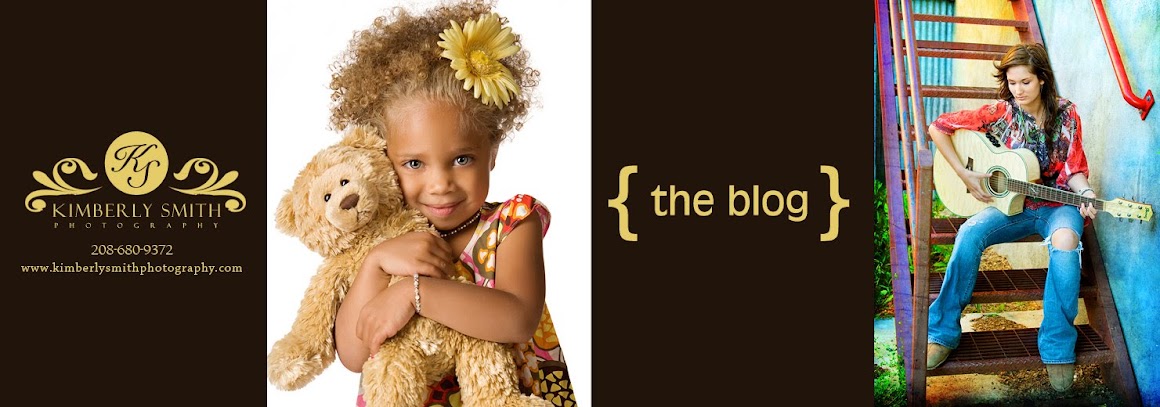Tips and Tricks Thursday
So I just realized I totally spaced posting last week. I had just returned from my FUN trip to Nashville, Tennessee and Kentucky and I got so busy with my kids, house work, and clients that I forgot to post! Sorry for those of you who are following this every week. I will try to be better. :)
Chapter 2: Manual Mode Settings
Part B: ISO
Today I want to discuss ISO. What it is and how to use it.
Unless you've used film in the past, you probably don't know what ISO is and how it effects your photographs. ISO stands for International Organization for Standardization. In relation to photography, it essentially means your film speed. Film Speed is the amount of light that is needed to properly expose your film or image.
Even though your camera is probably not film but is digital, the ISO camera setting still has the same function as older film camera's. Camera ISO determines how sensitive the image sensor is to light.
Depending on your digital camera model you may have ISO settings that range even higher than 800. My camera can go to 3200 and the Canon 5D MarkII can go to 25600.
If you are unsure where to find the ISO settings on your camera, check out your owners manual. Most digital camera's now will allow you to set your own ISO. And if you know where it is to change it, you will have more control in different lighting situations.
The general rule of thumb- The lower ISO settings (100-400) are for daylight and situations where there is a lot of light. And the higher the ISO settings (800+) are for night and low light situations.
Here is a quick reference guide for ISO settings...
- Use an ISO of 100 or 200 when taking photographs outside in sunny conditions.
- If the sky is overcast or it is evening time, then use an ISO within the range of 400 to 800.
- Night time or in cases of low light you might need to set your digital camera ISO to 1600 or higher if your camera will allow you to go higher. If you don't, then your photo will appear too dark, if at all.
How does the ISO speed affect the photographs end result?
If you set your digital camera to a low ISO, for example 100, the resulting photograph will be better quality than one set at 1600. The higher the ISO the more grainy the photo will look. I suggest going for a low ISO number whenever possible.
However there are circumstances where a lower quality photograph is better than none at all. For example, trying to take a picture in the evening when the sun is setting and there isn't very much natural light left. I had the opportunity to go to Grand Turks on one of our cruise ports last November and as I was headed back to board the cruise ship I wanted to get a shot of the ocean and an old dock. It was about 5:30 pm and there was hardly any light left. I cranked my ISO to 3200 and was still able to get enough light in to get the shot. The image is grainy, but I was still able to capture it. Here are the results...
When you use your digital SLR camera in automatic modes such as portrait, landscape and sports etc, all basic settings like ISO, Aperture and Shutter speed are automatically made for you. There are times when you'll want to override these automatic settings and choose the ISO yourself.
When to use the ISO setting on a digital SLR camera
- If you want to ensure the highest quality photograph possible.
- If you want to take a photograph in dark situations and not use a tripod.
For example, if you are on a tour through a mountain cave or at a fish aquarium, a tripod may not be an option. In these cases, you could up your ISO to at least 800 or more. This way, your camera will automatically keep to a fast enough shutter speed for you to hand hold your camera. Yet still allow enough light in to your camera's sensor for a reasonable night shot. As explained in the first section, this would cause a grainy photograph. However, in some circumstances any photo is better than none.
- If you want to take photographs in darker situations other than outdoors, without the use of a flash.
For example, if you were taking images in a museum or theatre, camera flash could be prohibited. Or if you were photographing a child blowing out their birthday cake candles. A bright flash could ruin the atmosphere. In this case you would keep the ISO at around 1600.
- If you want to take a photograph indoors of a moving subject.
For example, if you were taking photographs of a basketball game at an indoors sports center. In these circumstances there isn't always enough natural light to take a good photo, while at the same time the players aren't going to stand still long enough for you to shoot at a slower shutter speed either. Therefore, you could up your ISO to 800 or more. Again, this would allow enough light in to your camera's sensor for a reasonable shot.
 |
| This was shot with an ISO of 160 on a bright sunny day. Exposure is good and there is very minimal grain in the image. Good quality image. |
I hope you were able to learn something from this weeks "Tips and Tricks". Remember if you have any questions, please feel free to leave a comment and I will answer it as best as I can.
Challenge:
Go play with your ISO in different lighting situations and use different shutter speeds to see the difference. If your ISO is too low for the lighting situation, your shutter speed may be to low to hand hold as well. Just play with it and try out different setting options and see what you get. I would love to see your results if you want to share.
Click here to go to our Facebook pageHave fun playing!!!






No comments:
Post a Comment